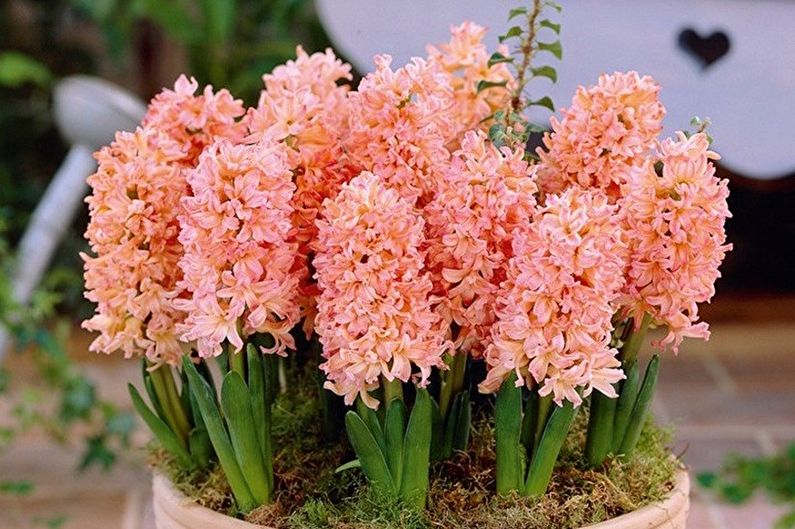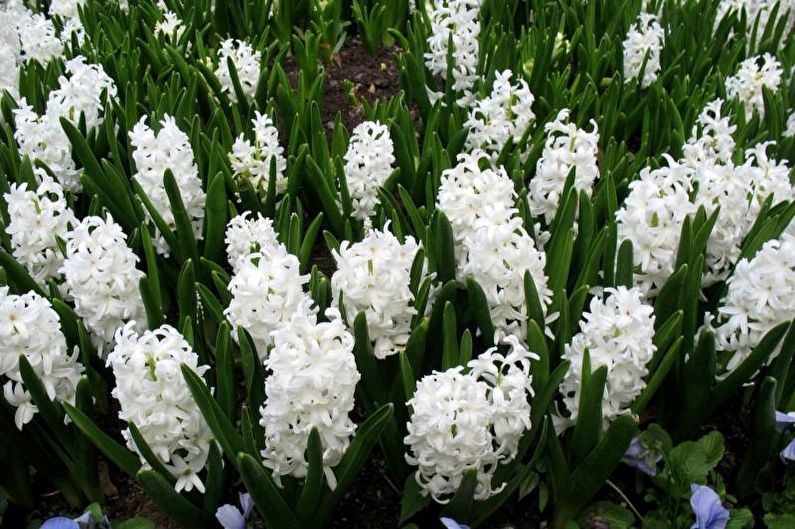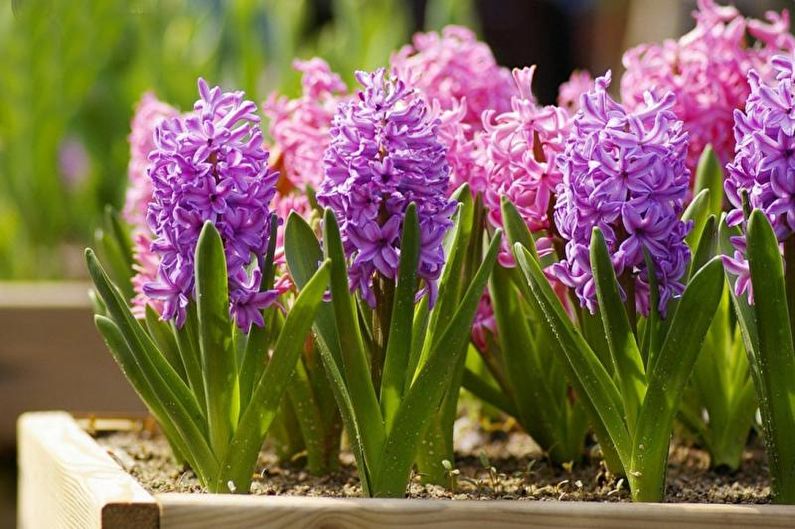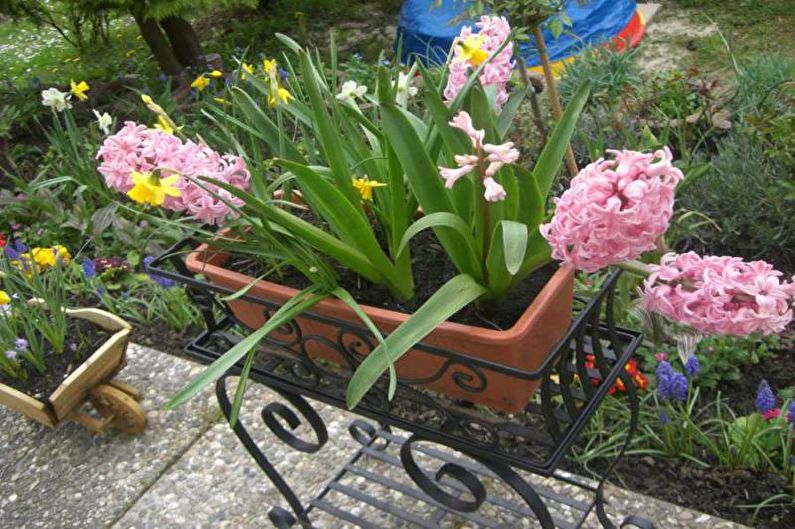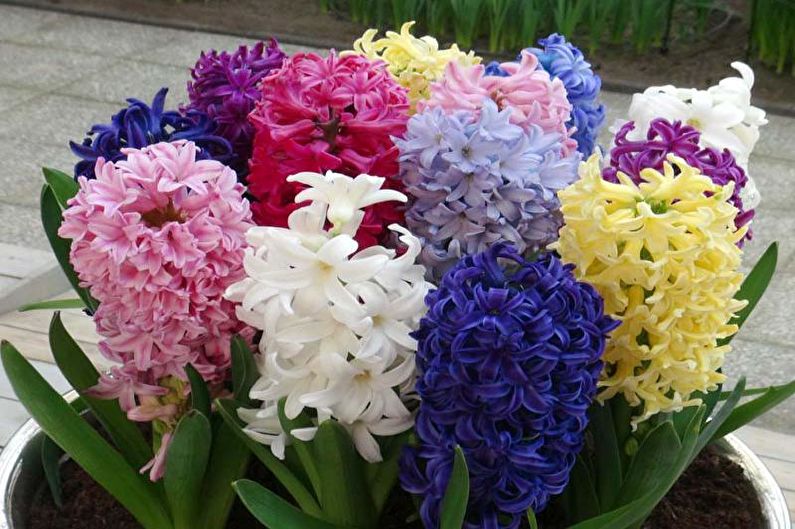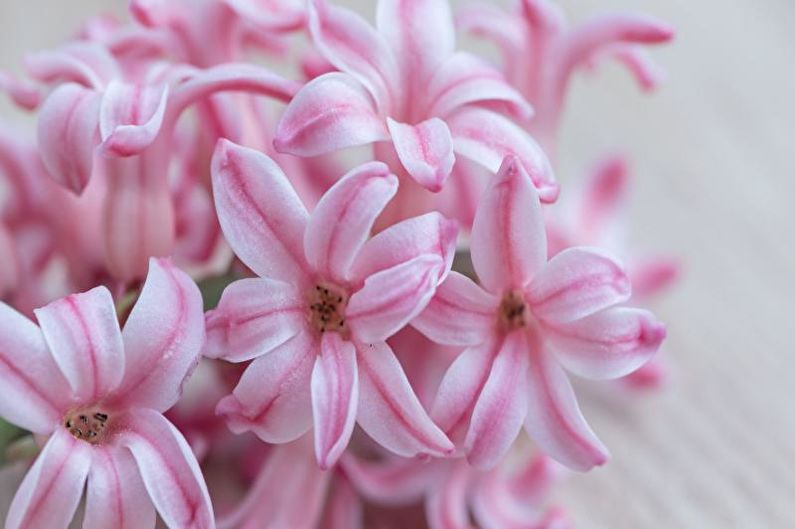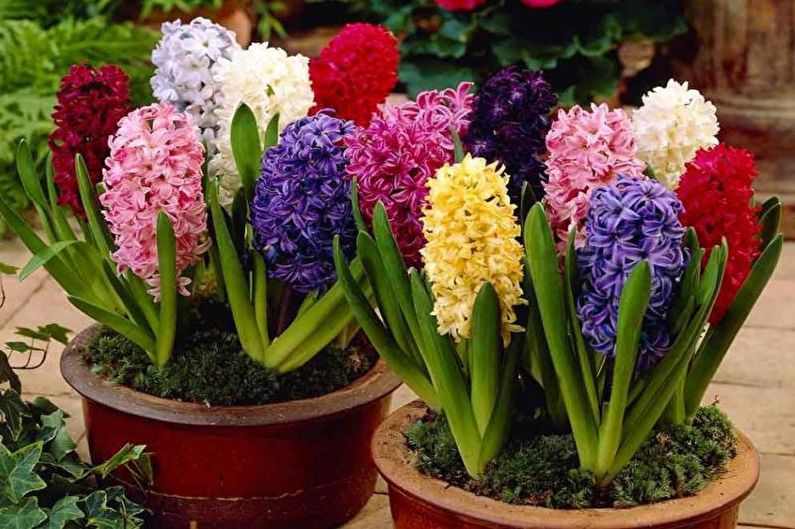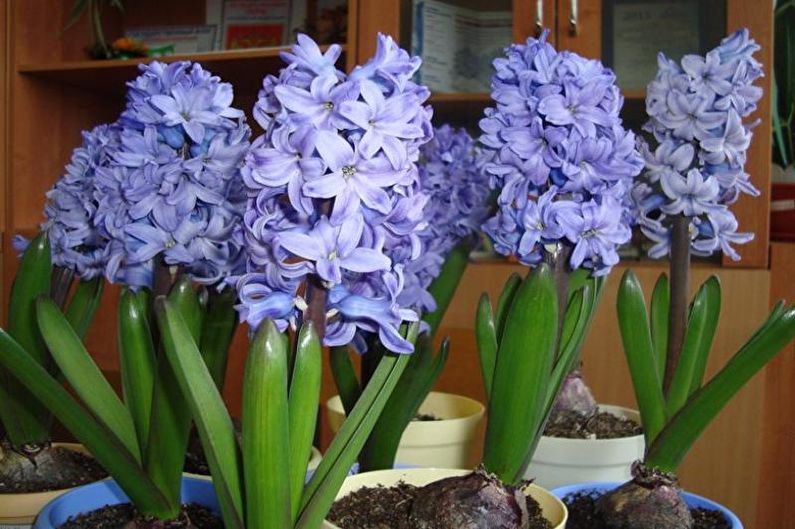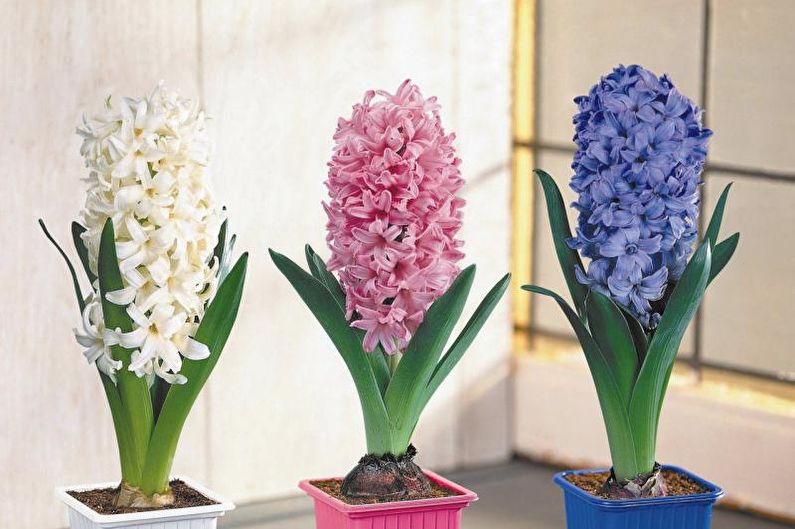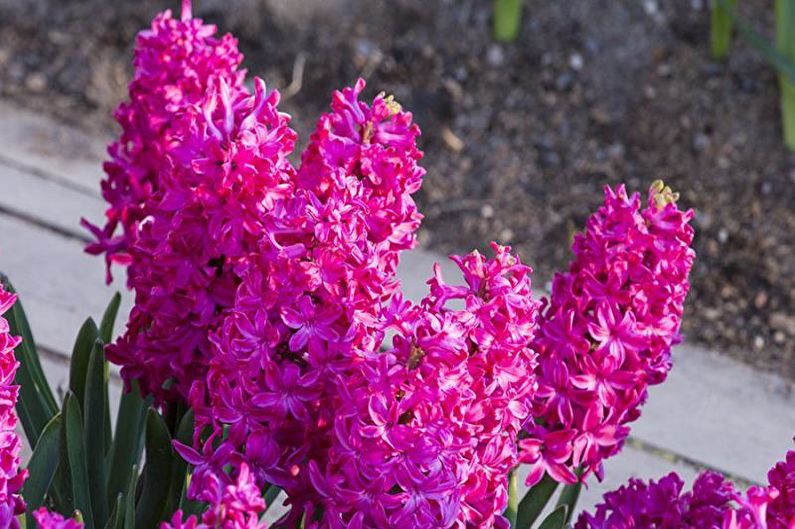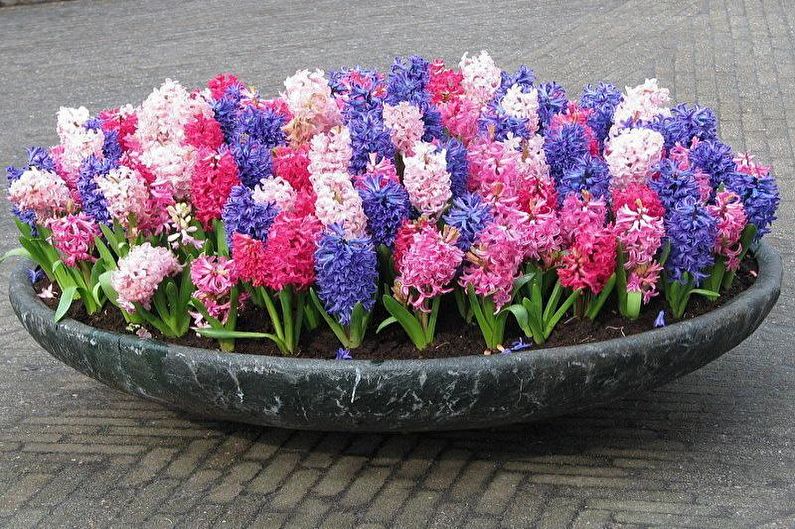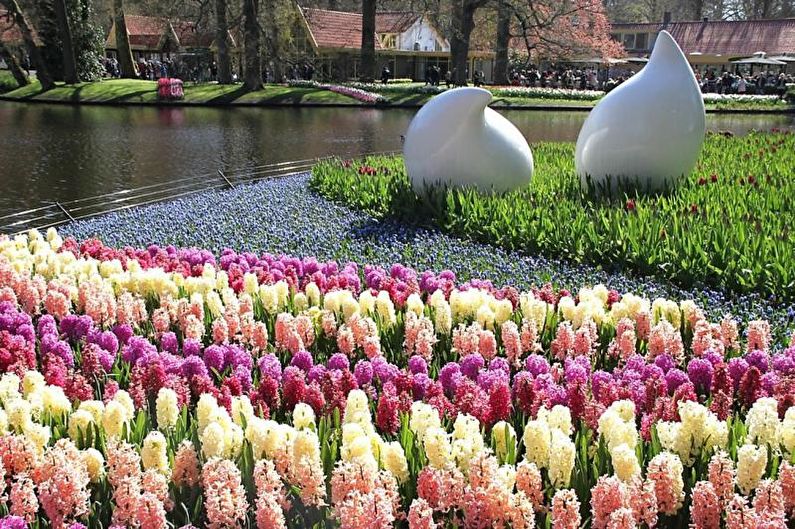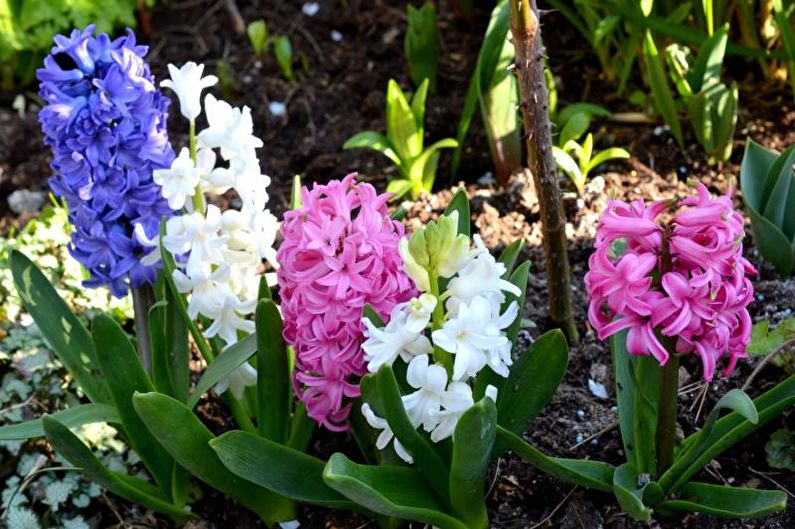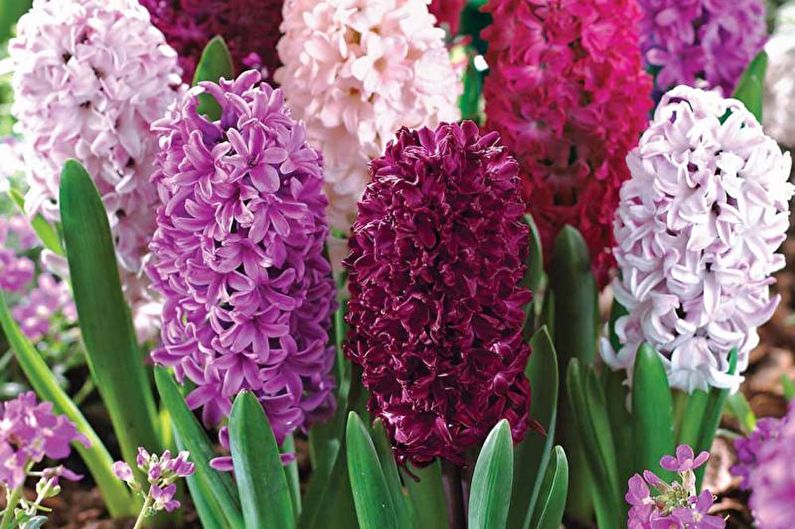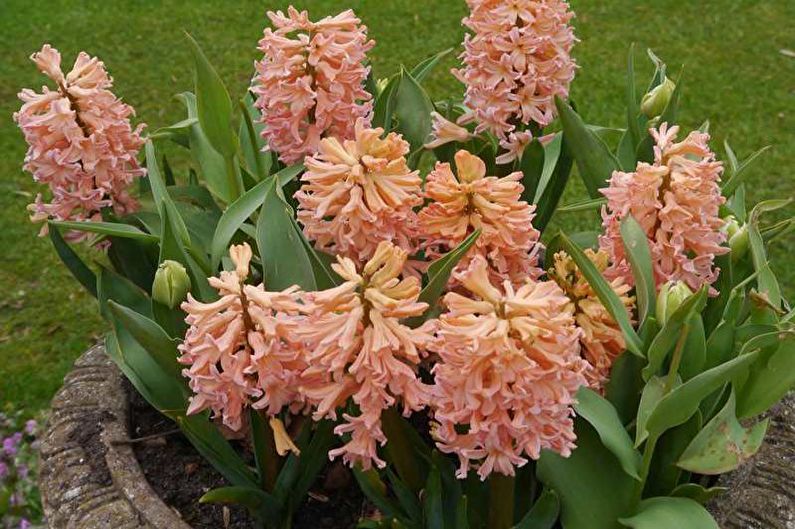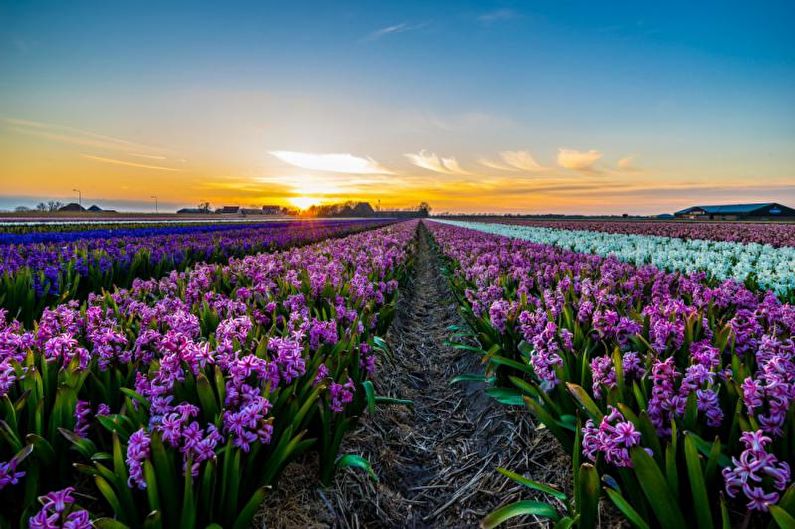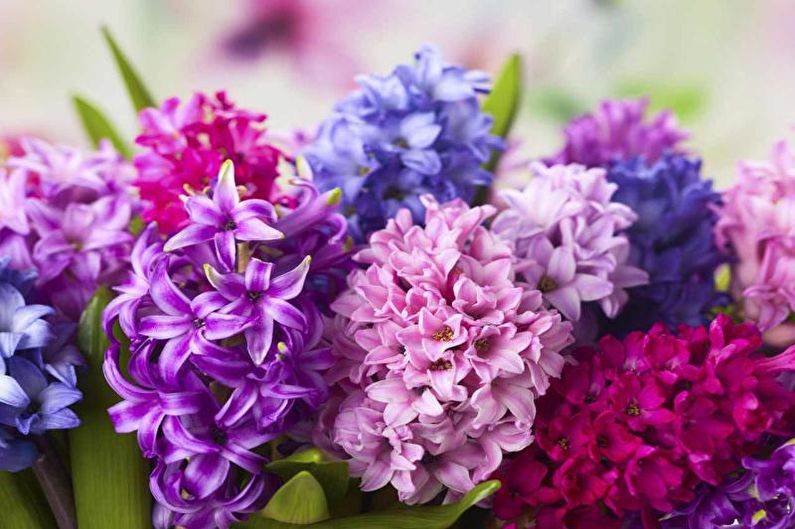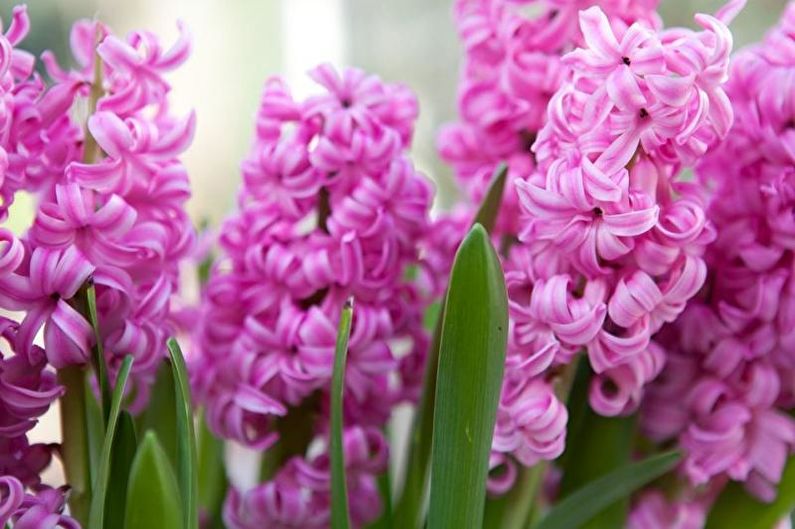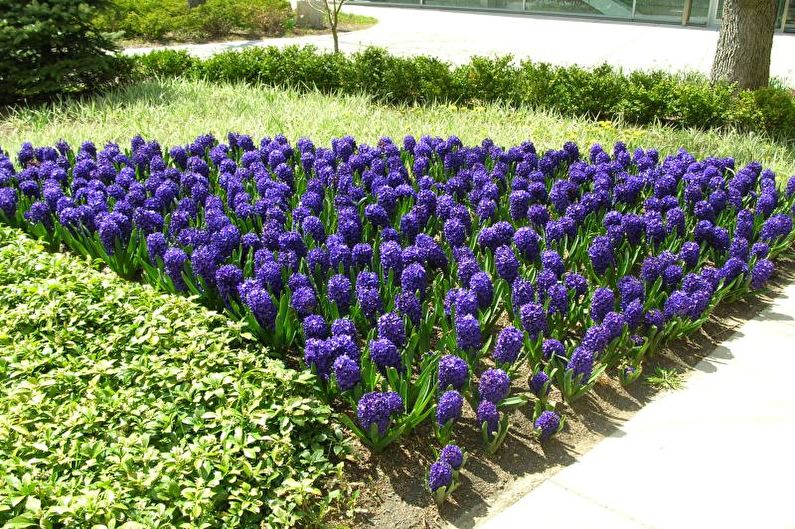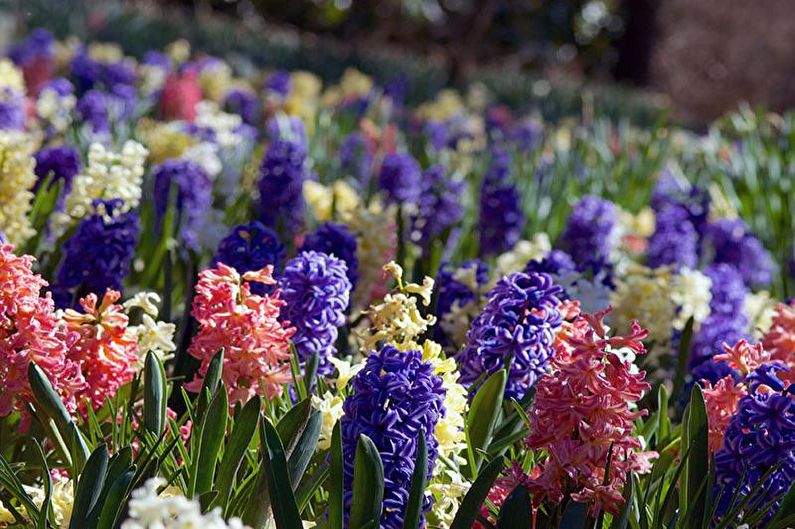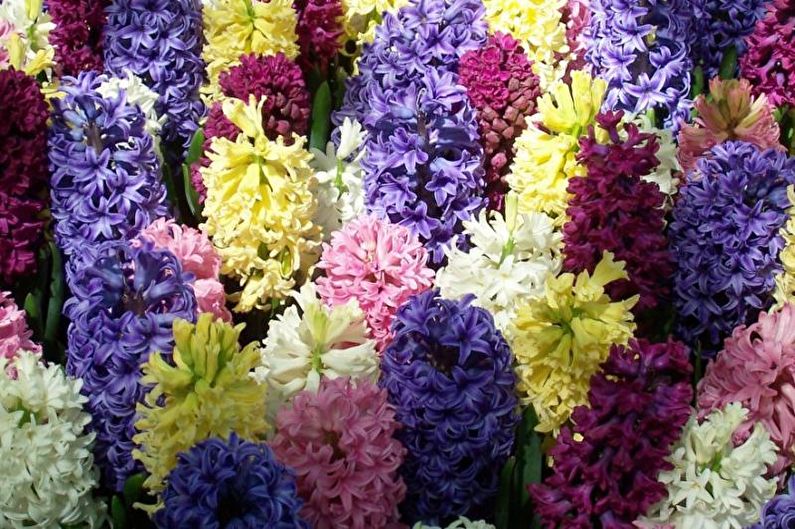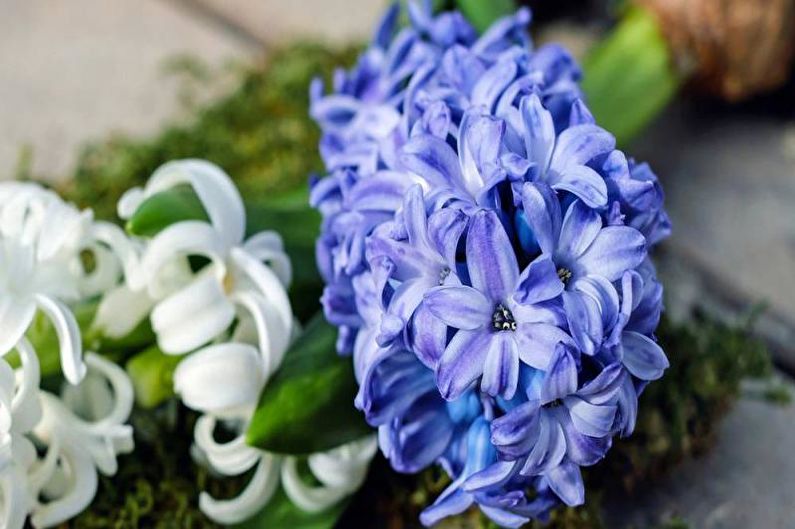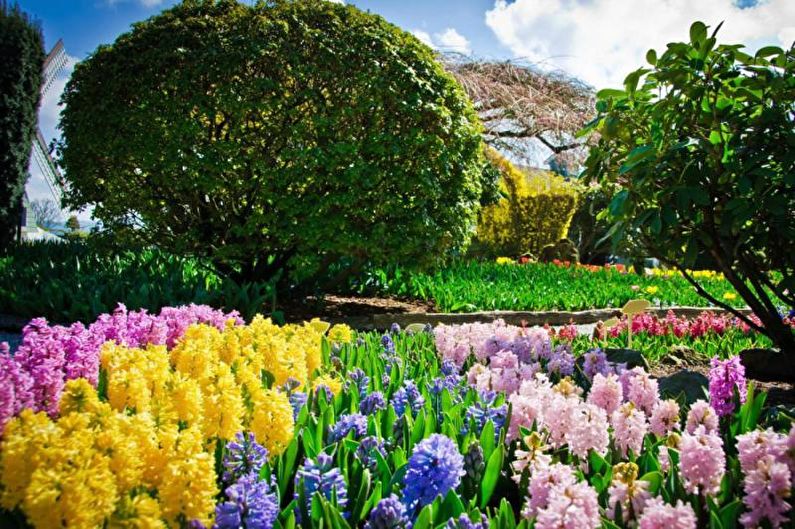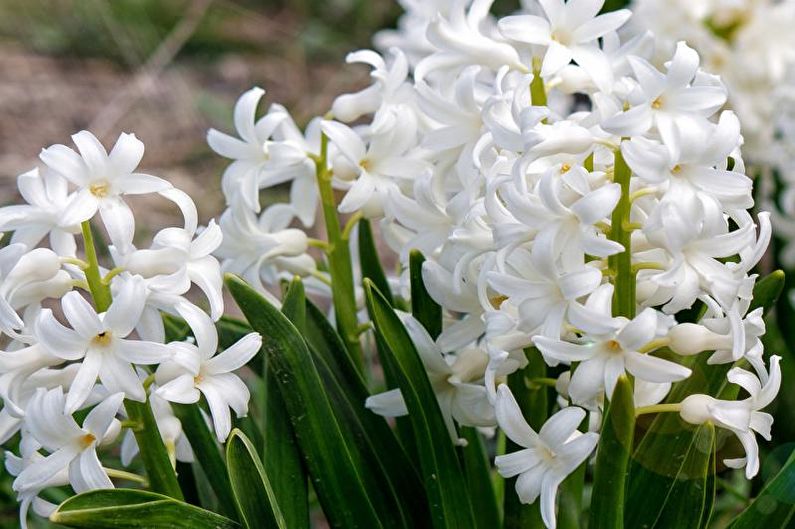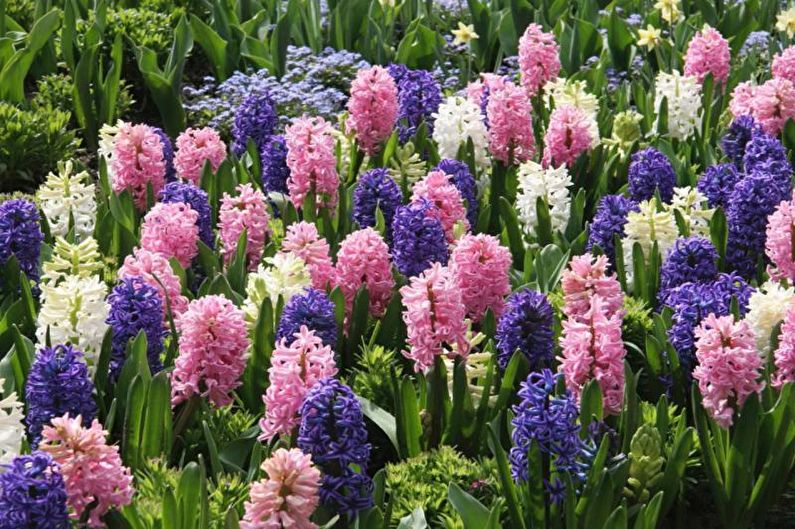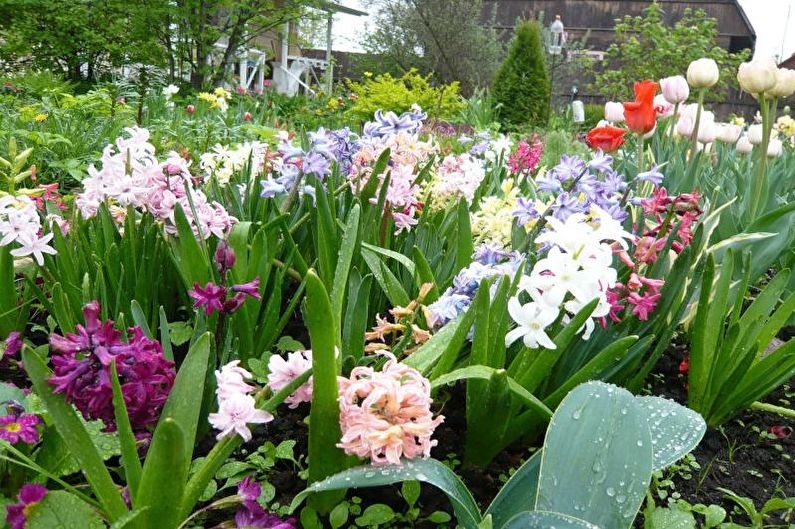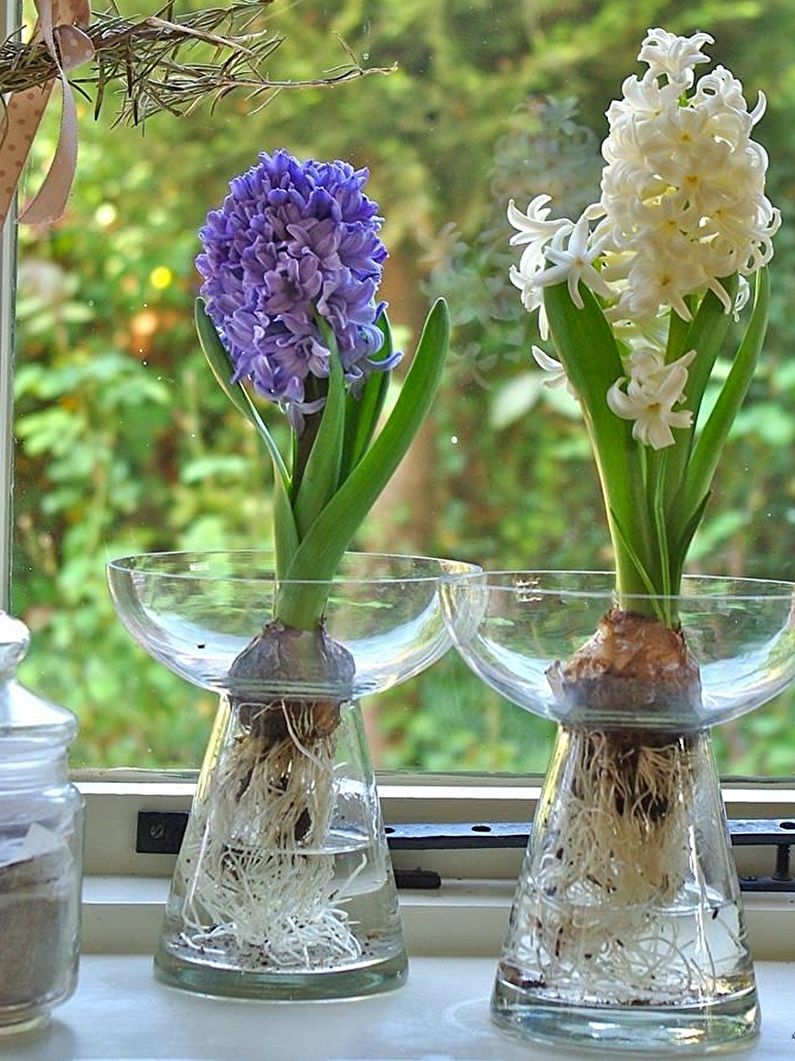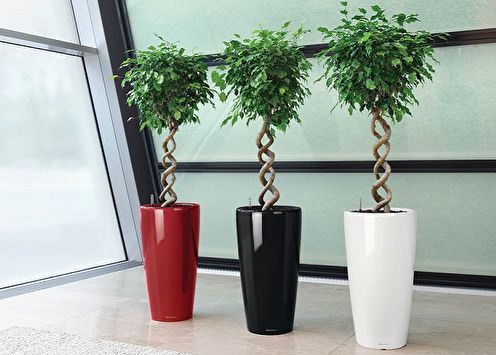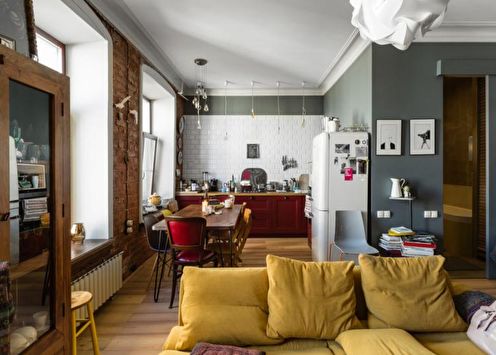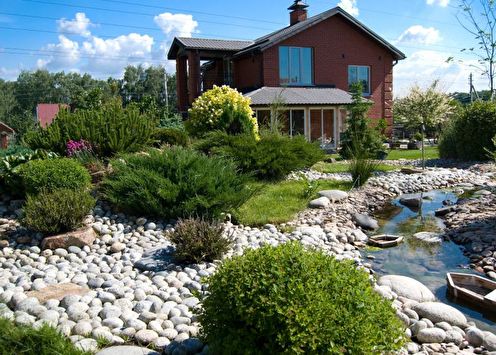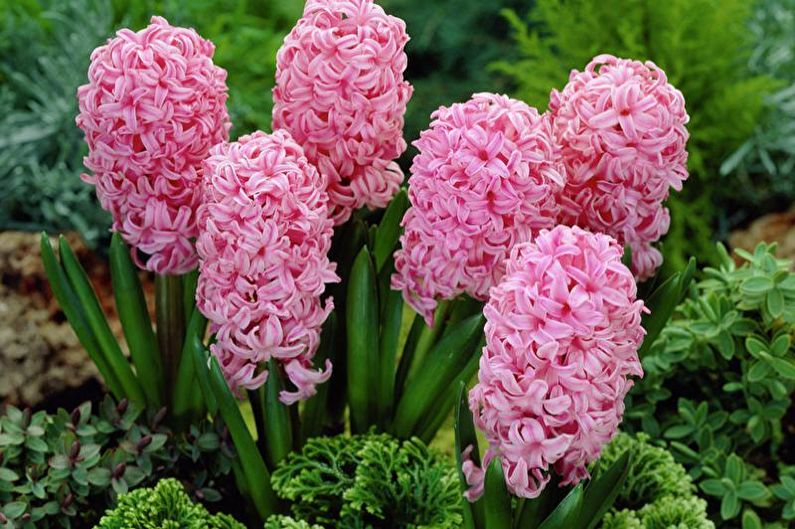
Among spring primroses, hyacinths occupy a special place. Their multi-colored fluffy brushes not only decorate the snow thaw on the flower beds, but also create a festive mood in the interior of apartments, offices, restaurant halls. These plants are very often used as a gift on March 8, replacing quickly fading cut bouquets. Hyacinth bloom lasts two to three weeks, after which the bulb can be planted repeatedly and get a new sprout next year. How to care for this culture will be described below.
Description and types of hyacinths
According to the botanical definition, hyacinth belongs to the Asparagus family and belongs to bulbous perennial herbs. It is characterized by fleshy, pointed leaves and one flower-bearing stalk, on which a lush cone-shaped inflorescence of bell-shaped perianth blossoms. In appropriate conditions, one bulb "lives" up to 10 years.
The natural habitat of the plant is the southern slopes of the Mediterranean and Central Asia, but it is cultivated mainly in the Netherlands, from which most of the planting material is exported. Wild species are not as lush as artificially bred varieties, so they are practically not used for decorative purposes. They are divided into only 3 categories, by region of growth: in Greece and Asia Minor it is East Hyacinthus (Hyacinthus orientalis), in Iran and Turkmenistan - Hyacinth Litvinova, in the mountains of Kopetdag - Caspian Hyacinth.
The palette of cultivated flowers is very rich: there are pearl white, lemon, bright yellow, orange, dark blue and even black and purple colors. All shades of pink, lilac, burgundy are widespread. Often the petals have a darker strip in the center, giving the inflorescence an extra volume.
The texture distinguishes between ordinary and terry varieties of hyacinths - the latter are distinguished by multi-layer petals and greater splendor of the hands. Depending on the time of bud blooming, early, middle and late-flowering varieties are distinguished, but this characteristic is very arbitrary, since when organizing the desired temperature and lighting, the vegetation process can be controlled manually.
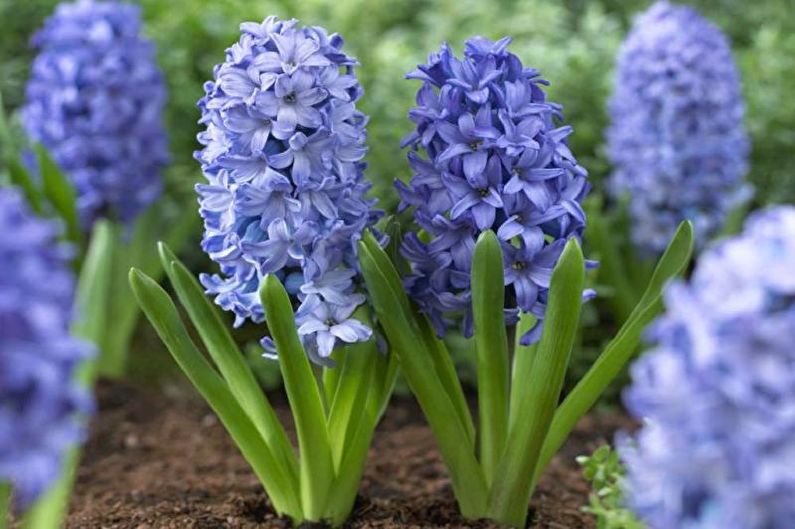

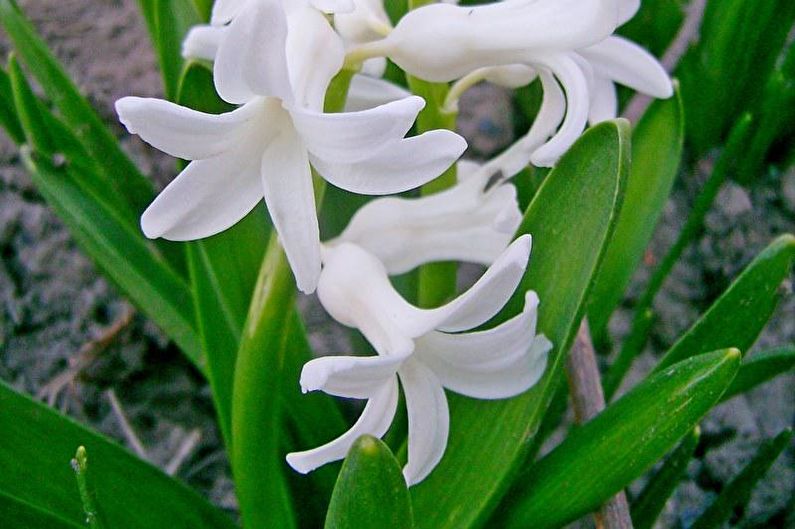
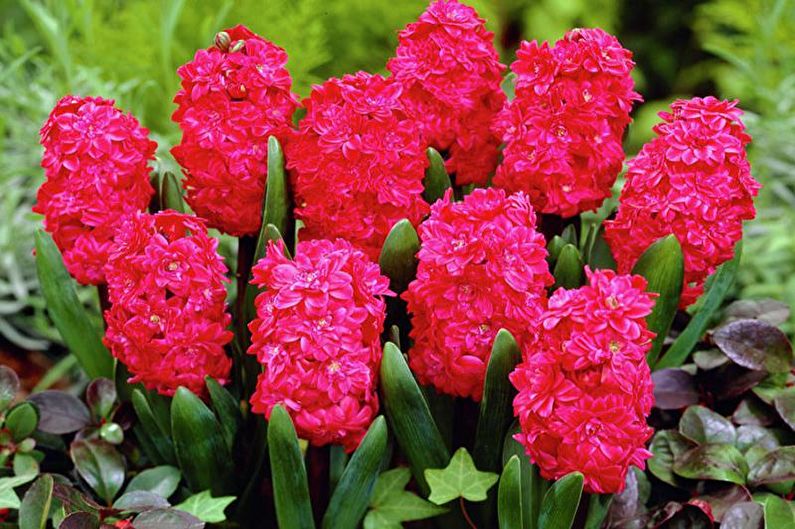
Hyacinth Care Rules
In the conditions of a mild winter, where there is no deep freezing of the soil, hyacinths can be safely grown on the street, observing some rules of agricultural technology. For the mass forcing of flowers in the cold season, greenhouses and greenhouses are used, but for a small number of plants, apartment conditions are quite suitable.
Lighting
In nature, hyacinths, like many other bulbous ones, prefer mountain slopes and meadows well-lit by the sun. Houses for them are suitable southeast and southwest window sills, glazed loggias or verandas. To avoid scorching rays, it is advisable to place a translucent tulle or slightly ajarized blinds between the glass and flower pots. In flower beds and garden plots, you should choose fairly open, but quiet places in which there are no gusts of wind or drafts.
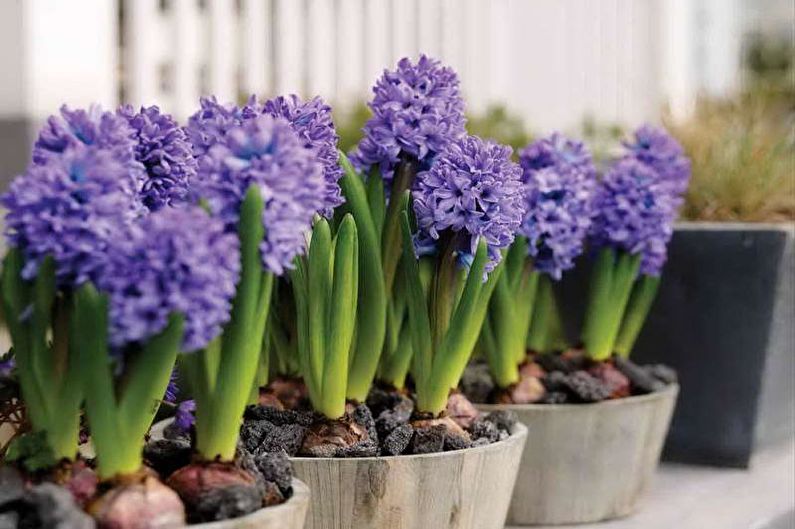

Temperature
The optimum temperature for hyacinth during flowering is + 20C. After the stalk withers, the warm climate is maintained until the fall, when it is time to plant the bulb again. Planting material is stored in a dry, well-ventilated place at + 18 ... + 25C. A new rooting is carried out in ‘winter’ conditions, when the temperature should not exceed + 3 ... + 5C, but as the germ appears, it is slowly raised.
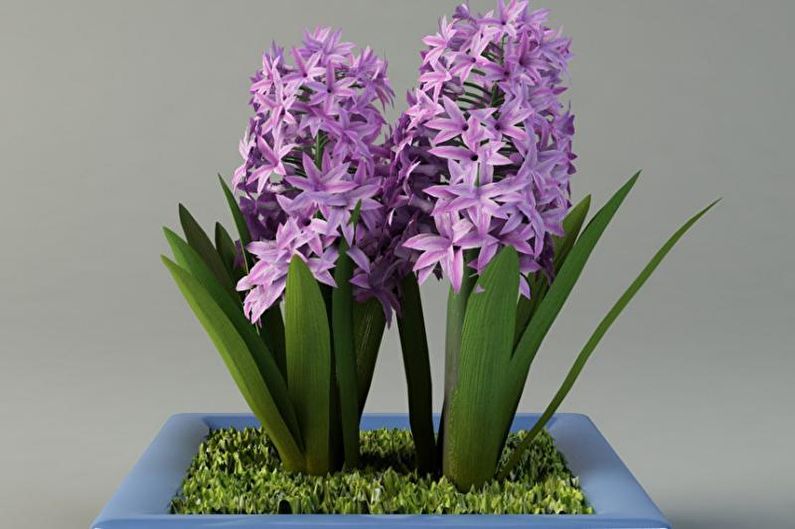
Watering
The maximum humidity required by the hyacinth bulb in the cold period, during the active growth of the roots. To do this, its base is immersed in a flask with water and fine gravel, or simply abundantly watered the soil.A developing and flowering plant should be moistened well so that the entire length of the roots is wet, but in no case swampy. After the stem has dried, watering is reduced, and after about 6-8 weeks it is completely stopped, giving the bulb the opportunity to dry, and then dig it up for storage.
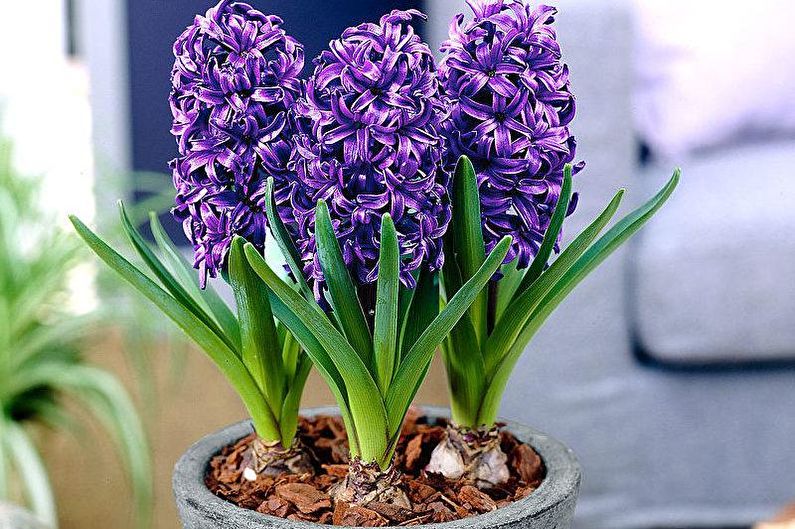
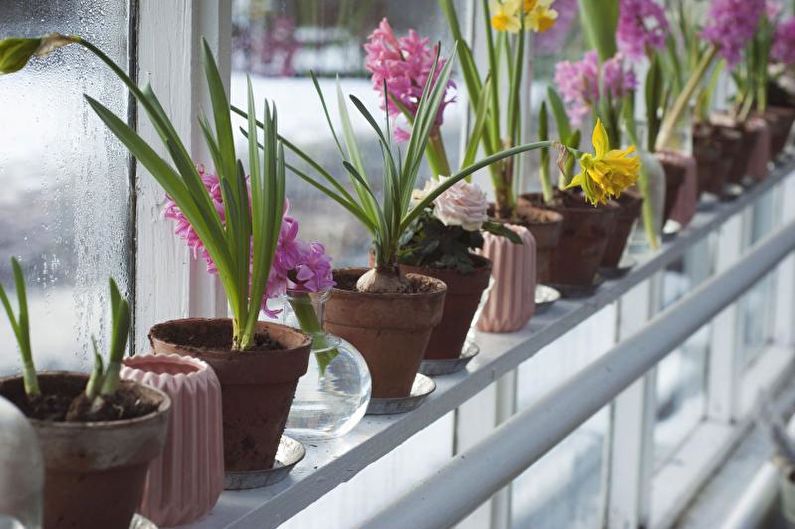
Fertilizers
Hyacinths are suitable standard nutrients for flowering plants. At room conditions, it can be simply watering with the addition of the appropriate substances: nitrogen when sprouts appear, the mineral complex during budding, potassium after the flower withers.
During planting, a lot of organic matter is introduced under the garden plants in the form of 3-4 year-old humus, and during the germination of bulbs per 1 sq.m. 20 g of ammonium nitrate and superphosphate are added, or 1 tablespoon of nitrophosphate and urea. In the flowering phase, solutions of boric acid (10 mg per 100 ml) and zinc sulfate (30 mg per 100 ml) are added. When drying per square meter of area, 30 g of potassium sulfate and superphosphate are added. Also at this time, you can water with the addition of 2 tbsp. nitrofoski on a bucket of water.
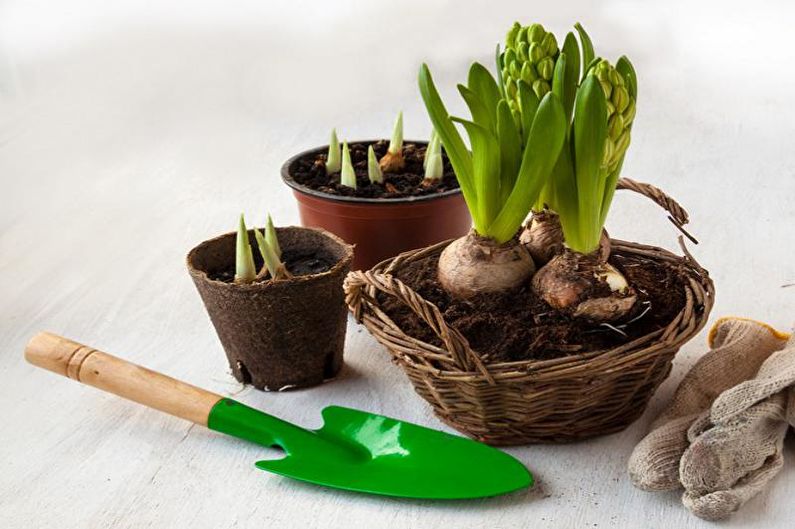
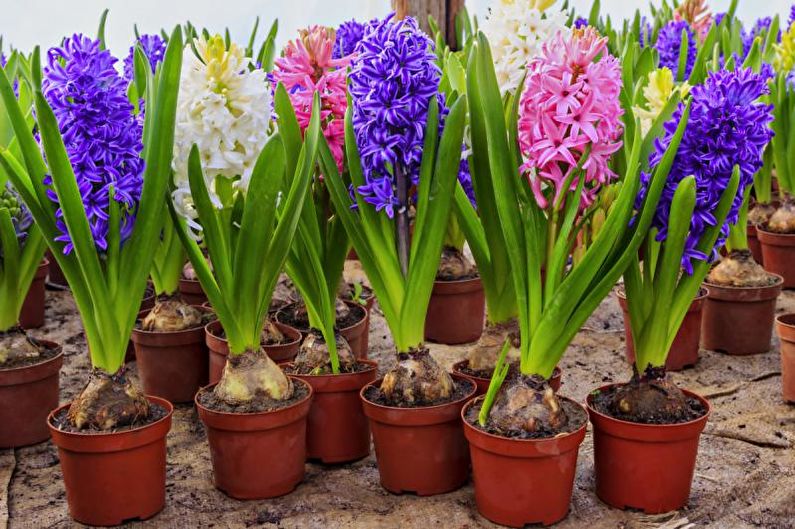
Hyacinth Distillation in Winter
To receive decorative flowers at non-standard times, for example, for the New Year, Valentine's Day or March 8, hyacinths must be placed in certain conditions that mimic the natural cycles. It is recommended that the “revitalization” of dry bulbs be started 2–2.5 months before the desired date of bud blooming. To do this, they are planted in a richly moistened substrate or immersed in the lower part 1-2 mm in water and left in a dark place (can be covered with a black film) at a temperature of + 3 ... + 5C. When green shoots appear, hyacinths are rearranged on the windowsill, gradually increasing the amount of heat (from + 5 ... + 7C to + 20C) and light. At a 20-degree temperature and 12-hour lighting, buds appear within a few days.
After the hyacinths have faded, they are left for about another 2 months in the same place, watering from time to time. A withered flower stalk can be cut, the leaves should turn yellow themselves. Around the end of May - beginning of June, watering is stopped, allowing the bulb to dry, then they are put in a cardboard box, cloth bag or paper bag for storage.
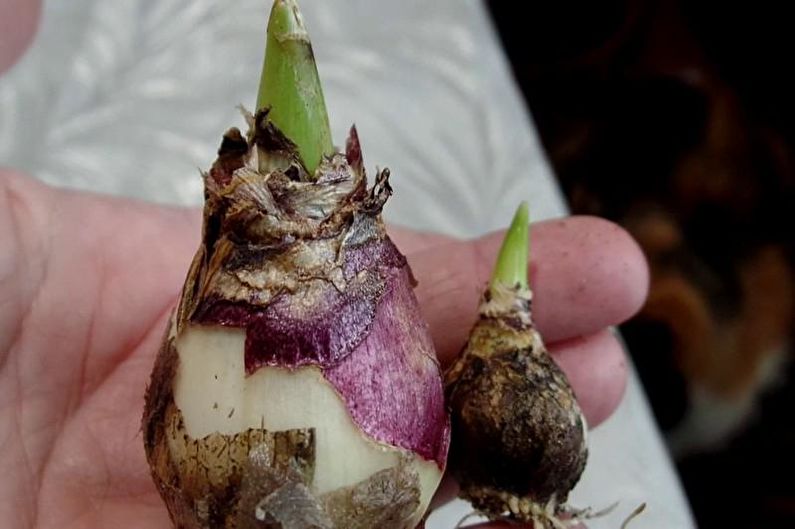
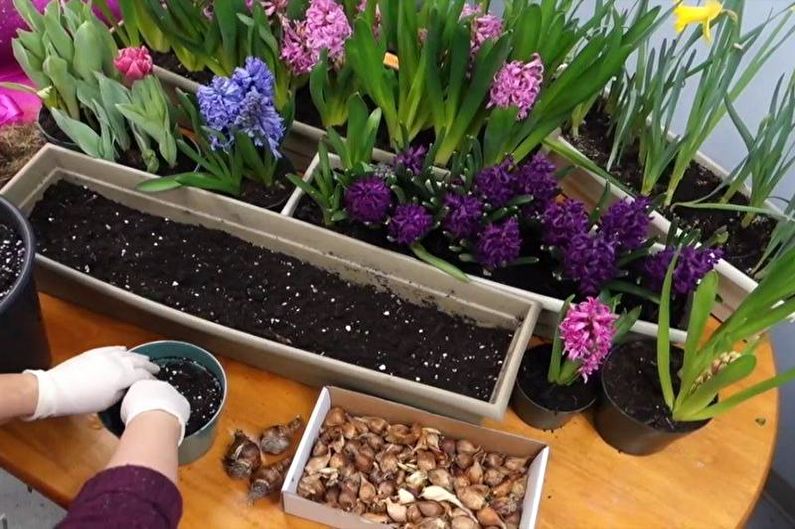
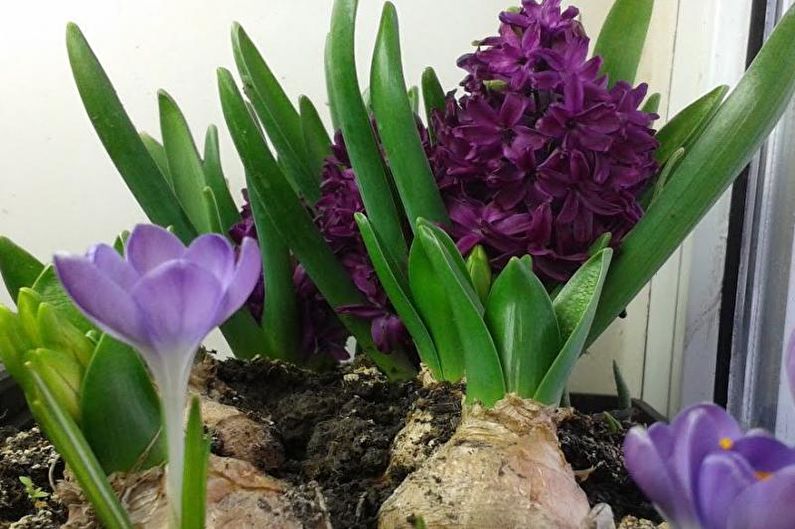
How to plant hyacinths
At home, for hyacinths, a loose sod-leafy substrate mixed with river sand is suitable. 4–5 cm of drainage should be poured to the bottom of the pot — it can be perlite, broken shells, eggshells, etc. Then, to avoid stagnation of water at the base, several centimeters of sand are poured. The soil layer should be at least 15 cm, since the plants produce sufficiently long roots. The upper part of the bulbs (about 2 cm) is not filled with the mixture, leaving it open.
When planting hyacinths on a flower bed, the soil for them should be prepared in advance. Ideally, it is recommended to use turf and leafy soil. If the earth is dense, river sand and peat are added to it. It is useful to add humus 3-4 years ago, but by no means fresh manure. Neutralize acidity will help crushed to the consistency of flour chalk, limestone, wood ash.
The only time you can plant hyacinths in open ground is the end of September - the beginning of October. Only during this period does the plant have a chance to take root and endure winter. Bulbs should be placed at a depth of 10-15 cm, with a row spacing of 20 cm, and between the flowers themselves - 15 cm. Before starting frosts, plantings are covered with fallen leaves, straw, wood shavings. If the mulch layer is small and does not interfere with the sprouts, it can be left in the spring - this will prevent the appearance of weeds and protect the earth from drying out.
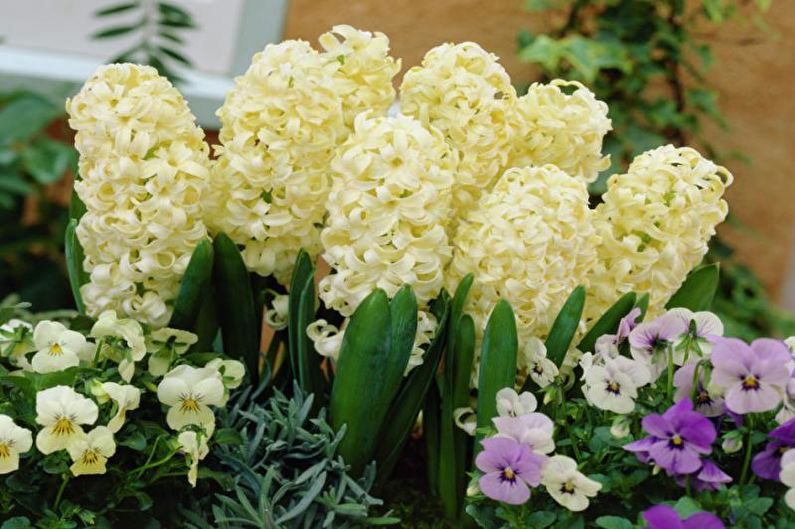
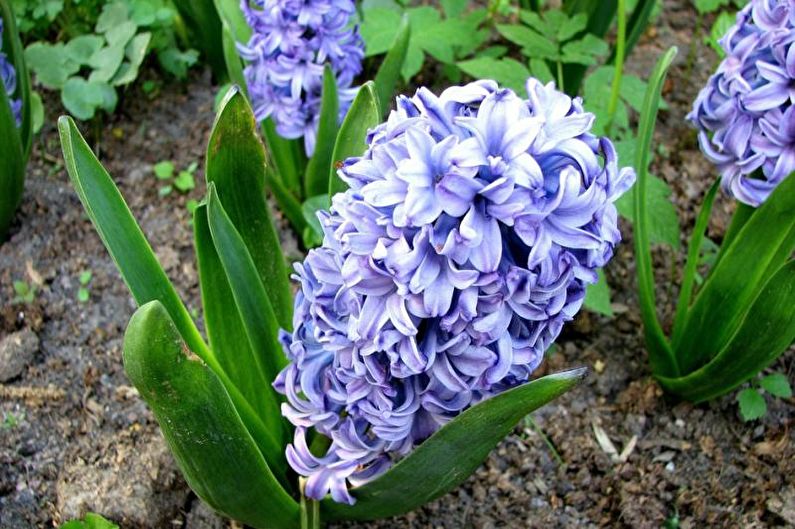
Hyacinth - photo
For those who choose flowers for planting on flower beds or in home pots, it will be relevant to look at colorful flowers of different types, shapes and colors. We offer you a selection of photos of hyacinths for inspiration and visual pleasure!
